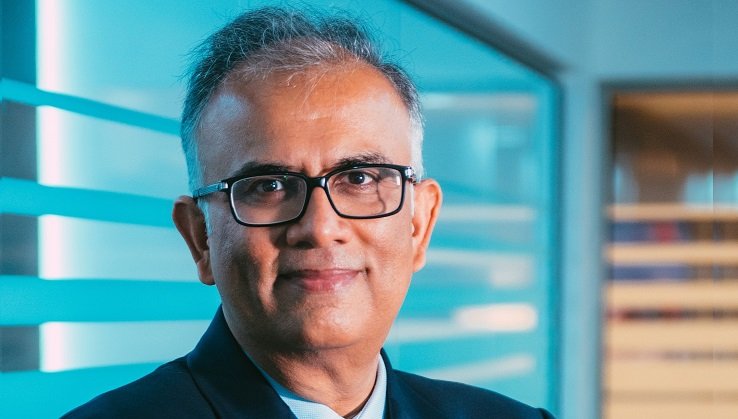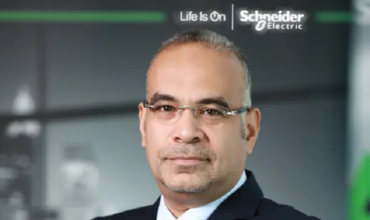Sanjay Kumar Sainani, Senior Vice President of Global Business Development and Global Chief Technology Officer for the Digital Power Business Unit of Huawei Technologies talks to DC Post MEA on the Data Center landscape of the Middle East.

Sanjay Kumar Sainani, Senior VP of Global Business Development and Global CTO for Digital Power Business Unit of Huawei Technologies
How would you describe the Data Center landscape of the Middle East at this point? Where is it headed?
There has been an explosive growth of digital technologies in the Middle East that has led to massive transformation across almost all industries. Entities in the public and private sectors have accelerated their digitalization plans and sought to stay connected as seamlessly as possible.
By 2025, global data volumes are expected to reach 180 zettabytes, increasing more than 400% from 40 zettabytes in 2019. Most of this will pass through a data center at some point. Data centers must cope with this massive demand. As such, data centers must evolve to meet the increased demand of a more connected society, leveraging 5G, cloud, and artificial intelligence capabilities to create more value.
GCC is one of the most active regions for data center buildouts, driven mainly by the growth in cloud adoption. According to the IDC, the GCC public cloud market will more than double in value by 2024, growing from $956m this year to $2.35bn at a CAGR of 25%.
The various economic programs in the region, such as Saudi Vision 2030, envision digitization at the heart of the post-oil economic evolution. Much of this innovation will happen in the cloud leading to accelerated cloud adoption expected in the next few decades. Additionally, mega projects such as Masdar in Abu Dhabi and NEOM in Saudi Arabia are decidedly digital, and most of their Smart City applications will run on the cloud.
The region also continues to attract investment by hyper scalers, drawn to a region where public and private organizations are at the forefront of the latest digital trends.
What are some of the leading trends in Data Center?
Based on Huawei’s experiences, the key trends that we believe will influence the evolution of data centers across the region are:
Quick deployment: Internet services usually burst in a short period, and data and traffic demand on the service side increase sharply. Therefore, data centers must be rolled out quickly. The faster rollout means faster benefits. The typical TTM of a data center is 9 to 12 months, which is expected to be shortened to less than 6 months in the future.
High Density: CPU and server capacity continue to rise, mirroring evolving IT computing capacity. As the demand for AI applications increases, the importance of high-performance computing power further rises. To balance efficiency and costs, data centers will evolve towards high-density models. Currently, the average power capacity in a data center is 6 to 8 kW/rack. It is anticipated that power density of 15 to 20 kW/rack will be predominant in data centers by 2025.
Scalable and future-proof architecture: The average tech evolution cycle of IT devices has been between 3-5 years, whereas a data center infrastructure’s evolution cycle is 10-15 years. This demands a high degree of flexibility of the data center facility to support 2-3 evolution cycles of ICT devices.
Elasticity, flexibility, scalability and time to deploy without burdening the CAPEX is becoming a major ask. We foresee a strong acceptance and growth of prefabricated modular data center facilities, which cut the construction period in half and allow a high degree of flexibility and scalability. This is becoming the mainstream construction approach for Data Center Service Providers in the Middle East and elsewhere when building large and medium-sized data centers.
Sustainability & Carbon Footprint: Data centers currently account for around 3 per cent of the world’s total power consumption. This will increase as more facilities come into use. Energy savings, reductions in emissions, and operating expenses are major challenges faced by data center operators that must be addressed. Reducing the power usage effectiveness (PUE) of data centers and building green data centers are inevitable if we are to reduce the carbon emissions from Data Center
The use of clean energy and waste heat is also a key step in the right direction. Saving essential resources such as land, water, and materials throughout the data center lifecycle is paramount to the sector’s growth.
Full digitalization and AI-enablement: The Middle East’s evolution towards digital infrastructure is accelerating, particularly the rapid adoption of AI applications. Data centers will benefit from this trend as more digitalization gets embedded across the data center life cycle from planning and construction to O&M, energy management, automation and resource optimization. AI will be widely applied throughout the data center facility to achieve efficiency and a higher degree of autonomous operation and life-cycle management.
How does Huawei help the region integrate to stay ahead of global technological innovations and trends in Data Center?
Continuous innovation is key to helping our customers leverage the latest advancements in data centers to save costs, reduce their carbon footprint and adopt new business models. We remain committed to technological innovation and investing heavily in R&D, Huawei’s R&D investments over the past decade have exceeded USD110 billion.
Being an integrated technology company means we can leverage innovations in our various business units such as AI, IoT and 5G, among others, to make our data center solutions the most technologically advanced in the industry.
Our open and collaborative approach to technology allows our customers in the region to incorporate other leading-edge solutions based on market demand.
What are some of your cutting-edge products and solutions of Huawei?
Huawei has developed a deep understanding of Data Center technology, resulting in the development of award-winning solutions. Our findings have revealed that an approach using high-density, optical-electrical integrated design incorporate flexible configuration of up to 800G per wavelength should provide sufficient power to handle the next 10 years of data demands.
The Huawei FusionDC prefabricated modular data center solution includes Huawei’s advanced series of data center infrastructure products, pre-integrated intelligent temperature control system, intelligent power supply and distribution system, intelligent lithium battery system, cabinet system, fire extinguishing system, and intelligent management system.
Huawei FusionDC customers benefit from rapid deployment, initial investment reduction, elastic capacity expansion, and intelligent O&M. It can effectively cope with the challenges of the rapid growth of cloud, AI, and 5G services to data center construction.
We have integrated Artificial Intelligence (AI) technologies in our data center design— including Huawei’s iPower, iManager, and iCooling technologies to improve the reliability and availability of data centers while reducing energy consumption and introducing automation
The Huawei NetCol8000-E series of data center cooling products feature indirect evaporative cooling technology to extend free cooling time significantly. Huawei’s “iCooling” AI-based solution leverages intelligent water-saving and power-saving modes to maximize the use of natural cold sources. With IT loads also matched in real-time with accurate air supply control, NetCol8000-E effectively reduces the energy consumption of the whole data center.



